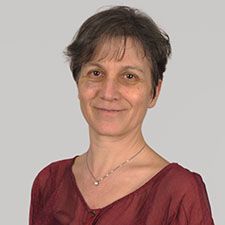Diagnostics
The diagnostic investigations for osteoporosis include a detailed medical history, especially with regard to risk factors, a clinical examination, fall tests, laboratory tests and a bone density measurement, as well as other imaging procedures if necessary.
Non-drug prophylaxis and treatment
Non-pharmacological measures play an important role in the treatment of osteoporosis and other bone diseases:
- Fall prevention: avoid tripping hazards (poor lighting, loose carpets, poor footwear, etc.) and fall-promoting medication (sedatives, antihypertensives, etc.)
- Avoidance of noxious substances: Nicotine abuse, excessive alcohol consumption
- Treatment of fall-promoting diseases (balance disorders, visual disturbances)
- Balanced diet:
- Proteins (1g/kgKG/day)
- Calcium (1000-1500mg/day)
- Vitamin D, 800-2000 IU/day (optimal serum level > 30μg/L = > 75mmol/L)
- Normal, not too low body weight (BMI > 20kg/m2)
- Physical activity:
- Physiotherapy/targeted osteoporosis gymnastics
- Muscle building training
- Balance training
- Sporting activity with predominantly axial load (dancing, hiking, running)
Drug treatment
The following therapeutic principles of action are currently used for osteoporosis therapy in Switzerland:
- Bisphosphonates: Bisphosphonates reduce bone resorption by binding to osteoclasts, thereby inhibiting their activity. Bisphosphonates usually remain in the bone for a very long time, which is why the therapeutic effect often lasts for months after the substance has been discontinued.
- RANKL inhibitor: By docking RANK (Receptor Activator of Nuclear Factor Kappa B) to its ligand RANKL, osteoclast formation, maturation and activity are stimulated. The monoclonal antibody denosumab inhibits the connection of RANK with RANKL and thus reduces the formation, maturation and activity of osteoclasts.
- SERMs: SERMs have a partly agonistic (bone, fat metabolism) and partly antagonistic (breast) effect on the oestrogen receptors and thus not only prevent postmenopausal bone loss, but also have a protective effect on the mammary gland.
- Hormone replacement therapy: Hormone replacement therapy can be discussed in peri- and postmenopausal women if perimenopausal symptoms requiring therapy are present at the same time. Hormone replacement therapy is not recommended as a primary therapy for osteoporosis due to the low risk of carcinoma development.
- Teriparatide: Parathyroid hormone administered pulsatile has an anabolic effect on the bone. Teriparatide is approved as a second-line therapeutic agent in the event of failure of previous antiresorptive therapy (fractures despite therapy).
